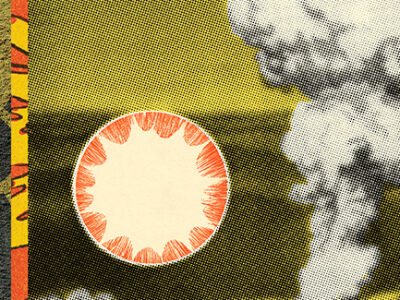Editor’s Note: A. Yasmine Rassam is director of international policy at the Independent Women’s Forum. Rassam participated in the April 5-6, 2006 conference hosted by The Center for Vision & Values at Grove City College titled, “Mr. Jefferson Goes to the Middle East: Democracy’s Prospects in the Arab World.” The topic of her lecture was “Women’s Participation in the Democratization Processes in Iraq and Afghanistan: Achievements and Challenges.” An attorney by training, Rassam concentrates on international and human rights law and foreign policy matters pertaining to women. Rassam holds a bachelor of arts in history from the University of Virginia and a juris doctor magna cum laude from Indiana University School of Law. She holds a legum magister (LL.M) with an emphasis on international law from Columbia University School of Law.
Q: Can you describe the treatment of women under the Taliban?
A. Yasmine Rassam: I will only briefly summarize what the Taliban’s practices were, which even under the most strict, fundamentalist Islam, was outside the norms of Islamic history. Under the Taliban, women were denied civil and political rights, denied freedom of assembly, were not allowed to leave their houses or walk down the street with anyone that was not related to them. They were routinely denied health care, forbidden to work and forbidden to get an education. Moreover, they were commonly beaten or even beheaded if they did not wear the burka (full body cover with the mesh eye slit). Their hands were chopped off if they were found wearing fingernail polish, and often if they were found wearing makeup they were publicly lashed. Women were brutally and systematically repressed by the Taliban to a degree almost unparalleled in a modern society.
Q: Since the overthrow of the Taliban, what have been the improvements regarding the situation of women?
Rassam: Immediately after the overthrow of the Taliban by U.S. forces, an Emergency Loya Jirga was set up as the Afghanistan interim authority. (“Loya Jirga” is Pashtun for “Grand Council” and is somewhat like a parliament.) Given Afghan women’s dire predicament there was a top down decision made by the U.S. forces and the international community to include women in all stages of the political process, and accordingly 12% of the Emergency Loya Jirga delegates were women. Additionally, there were three women members on the drafting committee for the constitution and seven women on the 35-member constitutional review commission, which approved the draft constitution. This is more women, proportionally, than served on the drafting of the Iraqi constitution.
Furthermore, Article 22 of the Afghan Constitution provides a broad equal protection clause that extends to both men and women. It states that the citizens of Afghanistan have specific rights and duties before the law. Secondly, the constitution provides that 25 percent of its lower house, and approximately 17 percent of its upper house be reserved for women. In addition, millions of Afghans voted on October 9, 2004 in their nation’s first presidential election; 40 percent of the eight million that voted were women. Massouda Jalal made history by becoming the first Afghan woman to run for the presidency. Moreover, the results of over 300 candidates running for office exceeded expectations by filling all of the 68 seats guaranteed by the quota as well as an additional 17 seats. President [Hamid] Karzai also named several women ministers to his cabinet, and there was also the first Afghan woman governor, established in the city of Bamiyan in March 2005.
Q: What are the challenges facing Afghan women today?
Rassam: I agree with the [Bush] administration that perhaps the most important challenge facing Afghanistan today is to have education for the country’s youth, both girls and boys. Five million children have returned to school, 40 percent are women. And you have to remember that this is just four years after women were not allowed to leave their houses and had to run underground school networks to teach little girls to read and write. But there also has to be proper training and education for adult women, especially those who are filling the legislative positions and running for political office. They need this access to proper education so that they can make independent choices. Otherwise there is the potential danger that women simply become symbolic participants in the democratic process rather than effective and qualified candidates that can advocate real change. Additionally, implementing the law provides one of the most difficult and complex challenges facing all of Afghan society. Article 1 [of the Afghan Constitution] declares Afghanistan to be an Islamic republic, but Article 3 bars any law contrary to the beliefs of the sacred religion of Islam. The real struggle will be between the reformers represented by the Karzai government and moderate Muslims, against strict interpretations of Islam by more hardline religious scholars.
Q: Can you speak to the treatment of women in Saddam Hussein’s Iraq?
Rassam: A lot of the anti-war and anti-Bush administration propagandists have leveled charges that women were simply better under Saddam than they are today, and that is simply not true. Following the Gulf War, Saddam’s supposedly secular regime gave way to strict Islamic rule. In order to gain popularity among Arabs and Muslims, he became what is called in Arabic, “the believer president,” and he launched a campaign to severely limit women’s rights in the name of Islam. Women lost many of their government jobs, were not allowed to travel without a male guardian, were allowed to be forced into marriages, and honor killings were excused. Between 1990 and 2000, 4,000 women died in honor killings and these killings were completely excused as justifiable under the law. This whole process culminated in 2000 when about 200 women labeled as dissidents were arbitrarily called prostitutes, and were publicly beheaded and speared on the doorsteps of Saddam’s sons. This is not women’s rights—I could go on and on about the torture and rape that women suffered. Saddam was an equal opportunity killer, so when people tell you that women’s rights were so great under Saddam, you have to remember that they were taken away at will by him, and that many women were tortured and killed. It does these women a grave disservice to say that they enjoyed rights under him.
Q: What are some of the accomplishments and challenges currently facing Iraqi women?
Rassam: Following the fall of Saddam, Paul Bremer and the Coalition Provisional Authority (CPA) appointed three Iraqi women to the 25-member interim Iraqi governing council. These three women paid very dearly for their pioneering efforts. One was assassinated three months after her appointment, the second one had her 17-year-old son shot, and the third one, thanks to God, is still alive, but has had many death threats.
Iraqi women leaders were also instrumental in trying to petition the CPA for the inclusion of a quota for women’s representation in the parliament, and because of their advocacy efforts, the interim constitution recommends a target of 25 percent representation of women in the national assembly. Under the Iraqi interim government, women headed six of 30 ministries, and 25 women also sat on the 100 member interim national council.




